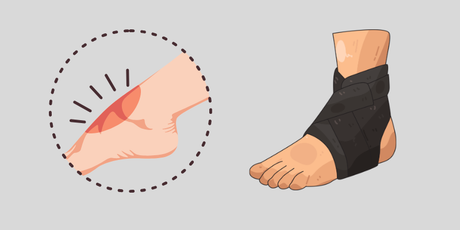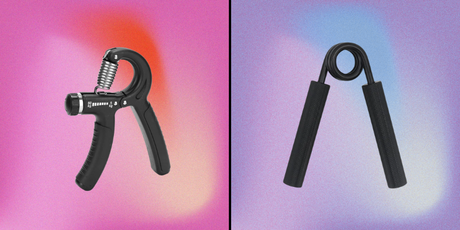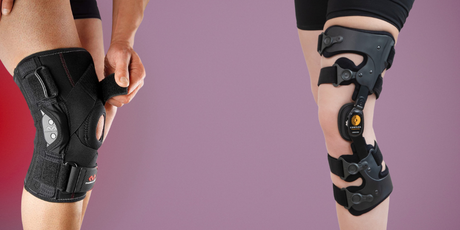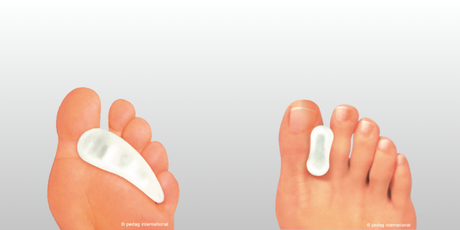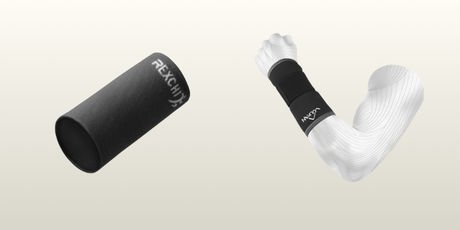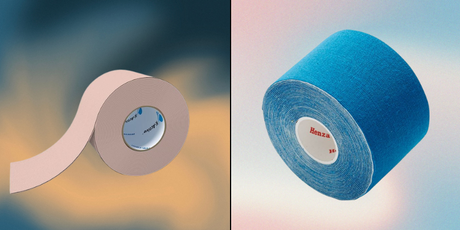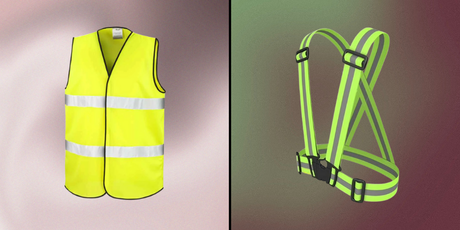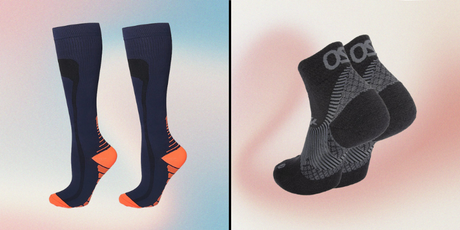Kinesiology tape has gained significant popularity in recent years, especially among athletes and fitness enthusiasts. This elastic therapeutic tape is designed to support muscles and joints while allowing for a full range of motion. Unlike traditional athletic tape, which restricts movement, kinesiology tape is flexible and can be used for various purposes, including pain relief, injury prevention, and rehabilitation. In this article, we will explore the origins, applications, benefits, and proper usage of kinesiology tape, providing a thorough understanding of this innovative tool.
If you think this is something you can benefit from, we suggest taking a look at our extensive collection of kinesiology tape, available in various widths, colours, and functionalities.
What is Kinesiology Tape?
Kinesiology tape is a thin, stretchy tape made from a blend of cotton and nylon. Developed in the 1970s by Dr. Kenzo Kase, a Japanese chiropractor, this tape was designed to mimic the elasticity of human skin. Its primary purpose is to support muscle function, reduce pain, and promote healing while allowing for unrestricted movement. The tape adheres to the skin using a medical-grade adhesive that is both water-resistant and hypoallergenic, making it suitable for various skin types.
Key Features of Kinesiology Tape
-
Elasticity: The tape stretches and moves with the body, allowing for natural movement.
-
Breathability: Made from cotton, kinesiology tape is breathable and comfortable to wear for extended periods.
-
Water-resistant: The adhesive is designed to withstand moisture, making it suitable for use during exercise or in wet conditions.
-
Hypoallergenic: Most kinesiology tapes are latex-free and designed to minimise skin irritation.
How Does Kinesiology Tape Work?
The effectiveness of kinesiology tape lies in its ability to interact with the body's sensory and muscular systems. When applied correctly, the tape lifts the skin slightly, creating space between the skin and underlying tissues. This lifting effect can help improve circulation and lymphatic drainage, reducing swelling and inflammation in the affected area.
Mechanisms of Action
-
Pain Relief: Kinesiology tape can disrupt pain signals sent to the brain, providing relief from discomfort.
-
Muscle Support: By providing gentle support to muscles and joints, the tape can help prevent injuries and improve overall performance.
-
Enhanced Circulation: The lifting effect of the tape promotes better blood flow and lymphatic drainage, aiding in recovery.
-
Proprioception: Kinesiology tape stimulates sensory receptors in the skin, enhancing body awareness and coordination.
Benefits of Kinesiology Tape
Kinesiology tape offers a range of benefits for individuals of all ages and activity levels. Whether you are an athlete recovering from an injury or someone seeking relief from chronic pain, kinesiology tape can be a valuable addition to your treatment plan.
Pain Management
One of the primary uses of kinesiology tape is to alleviate pain. The tape can help reduce discomfort associated with various conditions, including:
-
Muscle strains: Kinesiology tape can provide support to injured muscles, promoting healing and reducing pain.
-
Joint pain: The tape can help stabilise joints, providing relief from conditions such as arthritis or tendonitis.
-
Post-surgical recovery: Kinesiology tape can aid in the recovery process after surgery by reducing swelling and promoting circulation.
Improved Athletic Performance
Athletes often use kinesiology tape to enhance their performance. The tape can help improve muscle function and coordination, allowing for better movement patterns during physical activity. Additionally, kinesiology tape can help prevent injuries by providing support to vulnerable areas, such as the knees, shoulders, and ankles.
Enhanced Recovery
Kinesiology tape can play a crucial role in the recovery process after an injury or intense physical activity. By improving circulation and reducing inflammation, the tape can help speed up recovery times and minimise muscle soreness.
Applications of Kinesiology Tape
Kinesiology tape can be applied in various ways, depending on the specific needs of the individual. Here are some common applications:
Sports Injuries
Athletes frequently use kinesiology tape to manage sports-related injuries. The tape can be applied to support muscles and joints, helping to prevent further injury while allowing for movement. Common areas of application include:
-
Knees: Kinesiology tape can help stabilise the patella and support the surrounding muscles.
-
Shoulders: The tape can provide support to the rotator cuff and alleviate pain associated with shoulder injuries.
-
Ankles: Kinesiology tape can help support weak or injured ankles, reducing the risk of re-injury.
Rehabilitation
Physical therapists often incorporate kinesiology tape into rehabilitation programmes. The tape can be used to support injured areas while allowing for movement, promoting healing and recovery. It can also be used to correct movement patterns and improve muscle function.
Everyday Use
Kinesiology tape is not just for athletes; it can also benefit individuals with chronic pain or those recovering from injuries. The tape can be applied to various areas of the body to provide support and alleviate discomfort.
How to Apply Kinesiology Tape
Proper application of kinesiology tape is essential for achieving the desired results. Here are some general steps to follow when applying the tape:
Preparation
-
Clean the Skin: Ensure the area is clean and dry, free from lotions or oils that may affect adhesion.
-
Trim Excess Hair: If necessary, trim hair in the area to ensure proper adhesion.
Measuring and Cutting
-
Measure the Tape: Cut a length of tape that is appropriate for the area being treated.
-
Round the Corners: Trim the corners of the tape to prevent peeling.
Application
-
Anchor the Tape: Apply the first part of the tape without stretch to anchor it in place.
-
Apply Tension: Gently stretch the tape as you apply it to the skin, following the desired pattern.
-
Smooth the Tape: Rub the tape to ensure it adheres well to the skin.
Removal
To remove the tape, gently peel it off, starting from one end and pulling it back against itself. If irritation occurs, consider using oil or lotion to help loosen the adhesive.
Common Misconceptions About Kinesiology Tape
Despite its popularity, there are several misconceptions surrounding kinesiology tape. Understanding these misconceptions can help individuals make informed decisions about its use.
Misconception 1: Kinesiology Tape is a Cure-All
While kinesiology tape can provide relief and support, it is not a substitute for medical treatment. It should be used as part of a comprehensive treatment plan that includes physical therapy and other interventions.
Misconception 2: The Colour of the Tape Matters
Many people believe that the colour of kinesiology tape has specific therapeutic properties. In reality, the colour is primarily a matter of personal preference and does not affect the tape's performance.
Misconception 3: Anyone Can Apply Kinesiology Tape
While it is possible to apply kinesiology tape at home, proper application techniques are crucial for effectiveness. Consulting with a trained professional can ensure the tape is applied correctly for optimal results. Once you have been shown how to apply it by a professional, you’re of course able to continue doing so yourself.
Who Can Benefit from Kinesiology Tape?
Kinesiology tape can be beneficial for a wide range of individuals, including:
-
Athletes: Those engaged in sports can use kinesiology tape to prevent injuries and enhance performance.
-
Recreational Exercisers: Individuals who participate in physical activities can benefit from the support and pain relief provided by the tape.
-
Individuals with Chronic Pain: Kinesiology tape can help manage pain associated with conditions such as arthritis or fibromyalgia.
-
Post-Surgical Patients: Those recovering from surgery can use kinesiology tape to aid in healing and reduce swelling.
No matter what the reason for wanting to use it, our selection of KT tape has been curated so that everyone can find something that suits them.
Conclusion
Kinesiology tape is a versatile tool that can provide support, alleviate pain, and enhance recovery for individuals of all ages and activity levels. By understanding its applications, benefits, and proper usage, individuals can make informed decisions about incorporating kinesiology tape into their treatment plans. Whether you are an athlete looking to improve performance or someone seeking relief from chronic pain, kinesiology tape may be a valuable addition to your wellness routine.




